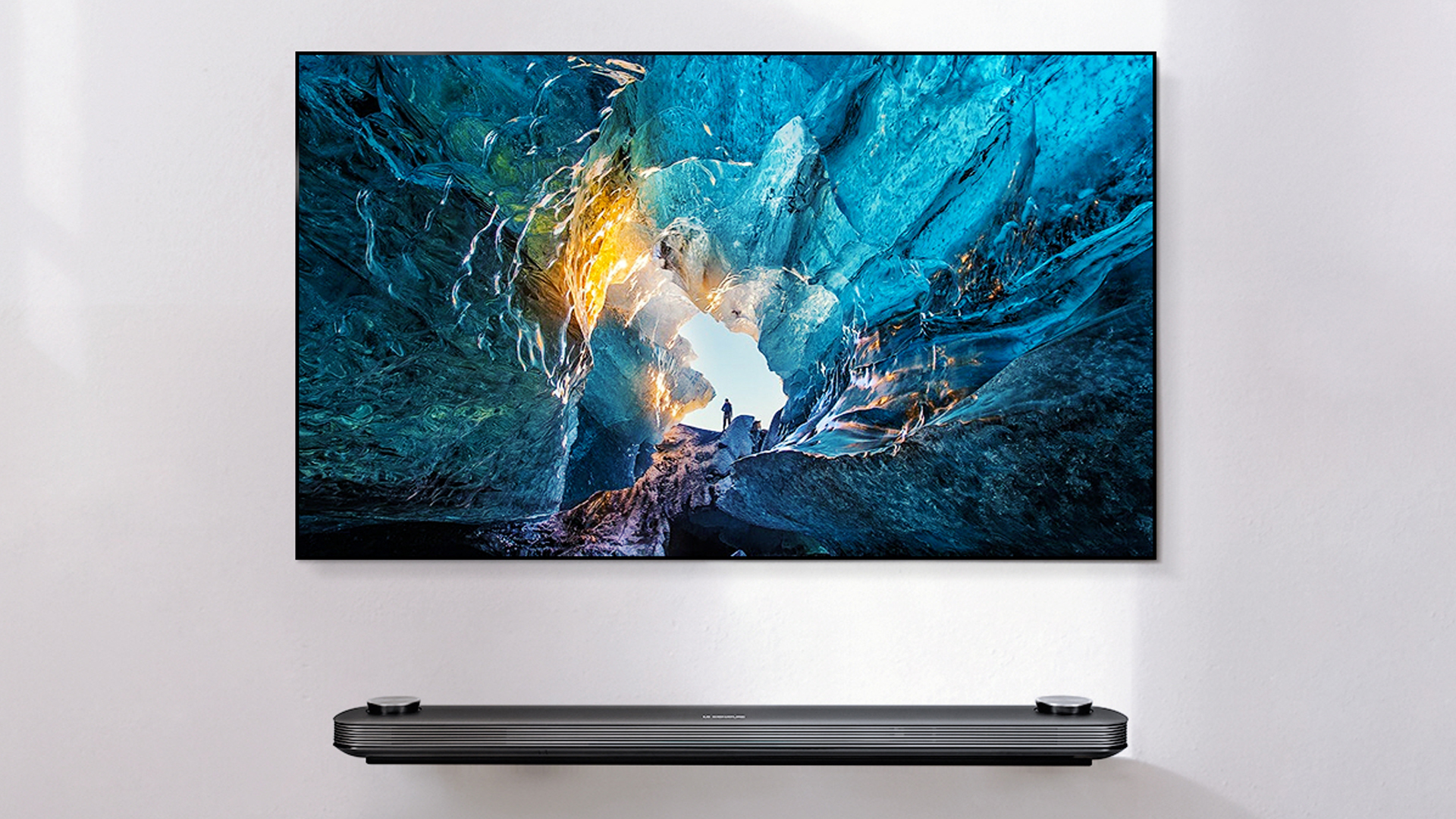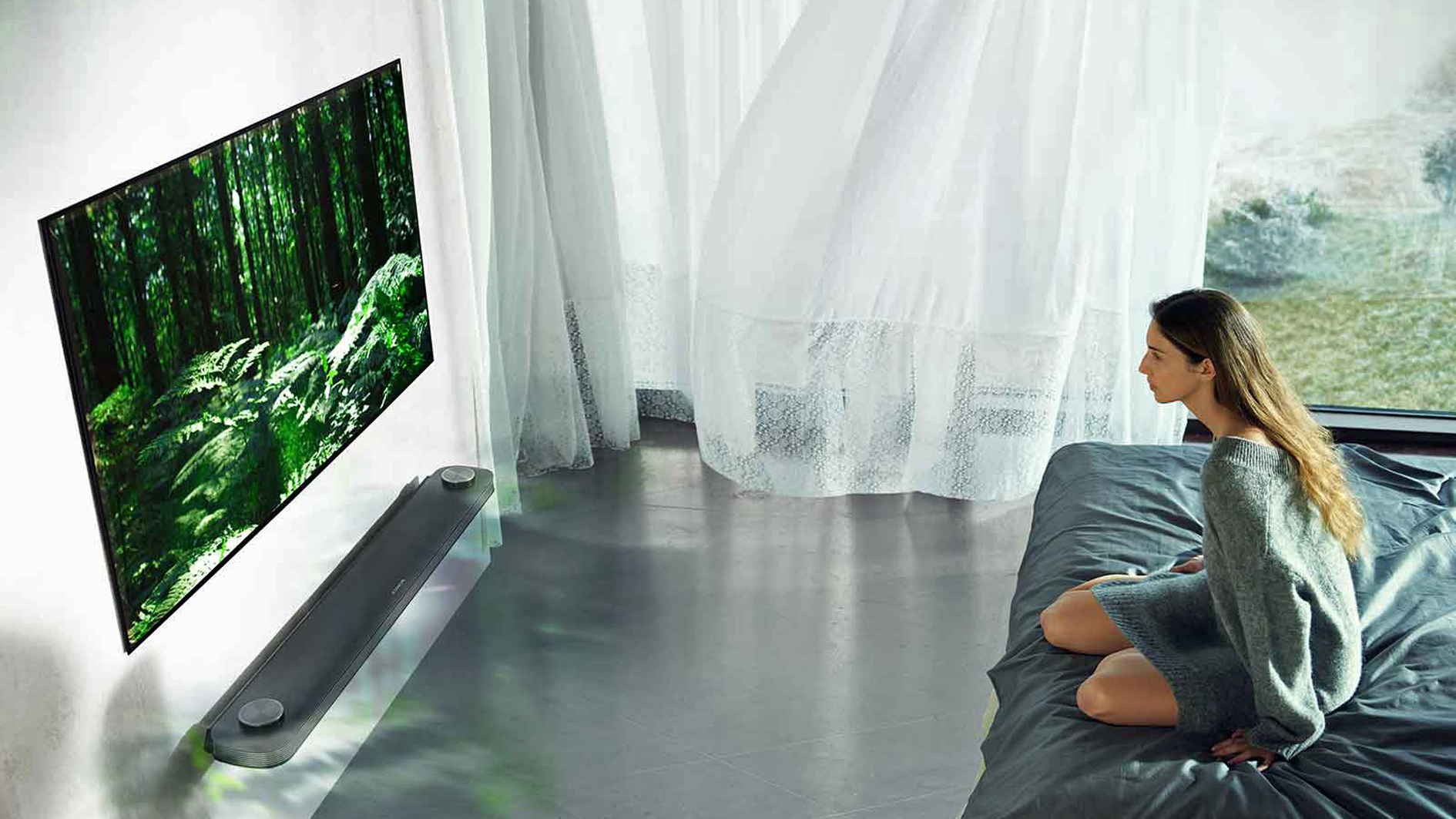An elegy for LG's Wallpaper OLED TV – the world's coolest and most impractical TV
LG's OLED TV showpiece is no more, but I still maintain this 2.5mm wonder is the most striking TV of our time, despite a fundamental flaw


LG's 2021 OLED TV line-up looks fantastic, and is off to an incredibly strong start already, as our five star LG G1 review will tell you. But there's something notably missing from it the selection this year: a 'Wallpaper' model'. And though few people will even notice it's not there, I think that's a damn shame.
The Wallpaper models were designed to emphasise the thinness of OLED in a way that even the best TVs could only dream of. The screen was just 2.5mm thick, and was designed for wall-mounting only. It attached magnetically to a special bracket you would fit to the wall, because when it's that thin, there's not really any way to hold it in place other than magnets.
The effect is incredible, especially with the punchy picture that the best OLED TVs are capable of. A live image, with bright HDR highlights and subtle blacks, looks printed straight on your wall – hence the 'Wallpaper' name. Anyone would think that the rest of the TV's thickness must be embedded in the wall – what you can see simply feels impossible.
But to prove it, you could always peel away a corner from its magnets to show them. Years before the new LG 'Rollable' TV, this showed that OLED could be flexible. Of course, you shouldn't flex it – it really was designed to stay flat – but thing about making something 65 inches diagonally and 0.1 inches thick is that you're going to get a bit of give.
All of the electronics are housed in a separate soundbar, which holds the image processing along with the various connections, while also acting as a full-on Dolby Atmos sound system. It's connected to the screen by an ultra-thin ribbon only, again that sits totally flat against the wall.
I remember when we gave one of the Wallpaper models a T3 Award and wanted to photograph it, I had the lengthiest conversation with LG about how the hell we could actually do that in a photo studio, where wall mounting isn't really an option. We got into the motions of starting to build a special faux wooden wall structure just to stick it on – with the company due to deliver one imminently, yet sounding extremely nervous (validly) about our plans – until we all decided that maybe a very high-resolution press image would suffice instead.

The soundbar is the oddest part of the system, and I think is a good example of why the Wallpaper TVs were easy to dismiss despite being impossibly cool. The idea of having a separate box for connections was not only essential, but is generally a great idea of premium TVs. The Samsung QN95A, for example, really benefits from having Samsung's One Connect box that similarly means you can tuck all your connections somewhere else, and have just a single cable going into the TV. Very premium, and very convenient. It means that if you wall-mount that TV, you can tuck that box away anywhere the cable reaches – way off to the side, tucked in a cupboard. Why not?
Get all the latest news, reviews, deals and buying guides on gorgeous tech, home and active products from the T3 experts
But you couldn't do that with the Wallpaper TV, because the separate box is also the (large) sound system. In fact, not only can you not hide it away, but you probably need to make sure there's a suitable surface for it to sit on, directly below the TV. Like some kind of TV bench. But what's the point in having the world's thinnest wall-mounted TV if you still have to have a TV stand in the exact same spot? If you've got to have the stand anyway, you might as well just buy one of LG's cheaper OLED TVs, which use the exact same OLED panel and processing, and put it on the bench.
You could also wall mount the soundbar, though! But it sticks right out, and definitely takes the edge off the whole effect. And also, you'll still need to connect your Blu-ray player/console/anything else into it.
No matter how much I love the effect of the Wallpaper TV, it's clear that having something that's harder to wall mount than any other set, but also somehow doesn't give you 100% of the benefits of wall mounting, was possibly not a goer for everyone. Especially when it cost a premium over those other TVs.
Maybe LG should have just made an audio-less TV, so the connection box could be tucked away somewhere hidden too. I could imagine a marketing department having a collective conniption over that, but the Wallpaper TV was never for 'normal' buyers. If you're buying a TV the thickness of a credit card just because it's the thickness of a credit card, you can probably invest in a sound setup suitable for your room too, right?
The equivalently cool model in LG's 2021 line-up is probably the Rollable OLED TV, which is finally on-sale in more countries now. But it's not the same. Oh, obviously it's glorious in its own way, but when it's extended, it's just a normal TV with a big stand taking up a chunk of the room. It's a technological showpiece, and is truly impressive. But the Wallpaper was art.

Matt is T3's former AV and Smart Home Editor (UK), master of all things audiovisual, overseeing our TV, speakers and headphones coverage. He also covered smart home products and large appliances, as well as our toys and games articles. He's can explain both what Dolby Vision IQ is and why the Lego you're building doesn't fit together the way the instructions say, so is truly invaluable. Matt has worked for tech publications for over 10 years, in print and online, including running T3's print magazine and launching its most recent redesign. He's also contributed to a huge number of tech and gaming titles over the years. Say hello if you see him roaming the halls at CES, IFA or Toy Fair. Matt now works for our sister title TechRadar.